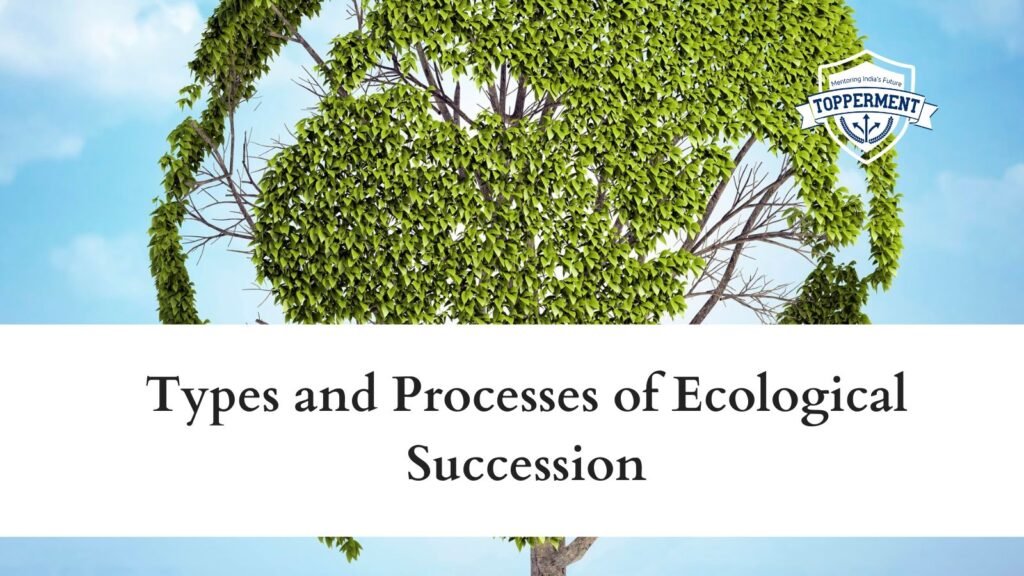Succession is the order of colonization of species in an ecosystem from barren or destroyed areas of land. Ecological succession is a series of changes that occur in an ecological community over a period of time. The aim of the ecological succession process is to maintain an equal balance in the ecosystem.
The community that achieves this aim is called a climax community. There are different types of ecological succession that are Primary succession, secondary succession, and cyclic succession.
Primary Succession
Primary succession is a type of succession that starts in lifeless areas such as the regions devoid of soil or the areas where the soil is unable to sustain life. When the planet was formed first there was no soil, the earth was only made up of rocks and they were broken down by microorganisms and eroded to form soil. The soil became the foundation of plant life.
Secondary Succession
The secondary succession occurs when the primary ecosystem gets destroyed. For example, the community gets destroyed by natural accidents like fire, and water. The community only gets recognized after the destruction, this is known as secondary ecological succession. In this succession, the small plants emerge first, followed by larger plants. The tall trees block the sunlight and change the structure of the organisms.
Cyclic Succession
cyclic succession is only the change in the structure of an ecosystem on a cyclic basis. Some plants in the ecosystem remain calm for the rest of the year and emerge all at once. This process drastically changes the structure of an ecosystem.
Process of Ecological Succession
Nudation: It is a simple process of development of a bare site uninhabited by any organisms. The process is usually caused by disturbances caused by soil erosion, climatic factors, and human activities. The area formed can sustain only autotrophic organisms that can utilize inorganic substrates.
Migration: The migration process helps the arrival of seeds and reproductive propagules for the establishment of species. The migratory species are non-native organisms that can spread across a community and they are usually threatening to the ecosystem and cause disturbance in the community.
Aggregation: The process of aggregation is the increase in the population of the species that have become established in the area. It is quite common that the small species get replaced in most successions.
Competition: Once the initial species become established, competition among the species starts. The competition is only for the resources like food, and water. This competition process is found in plants and animals.
Reaction: The environmental conditions get modified by the action species occupying the habitat. The changes subsequently trigger the displacement and replacement of one species by another. Because of the harsh conditions, the existing community will be unable to support them.
Stabilization: It is the process by which the climax community gets established. The community is mature, self-sustaining, and stable and it is the final stage of succession. The physical and chemical conditions are stabilized to such levels that it supports the entire community.
Ecological succession types and process helps us to understand in depth nature and its aspects. It is a simple process by which the mix of species and habitats in an area changes over time. The communities replace one another until the climax community like a mature forest is reached, or until a natural disturbance like fire, or water accident occurs.
Also Read
- Types of Ecology and Ecological Hierarchy | UPSC Environment
- Types of Government And Their Significance | UPSC Polity
Follow Us For More Content On:
https://www.instagram.com/topperment/
Tag:Aggregation, Competition, Cyclic, Environment, IAS, IFS, India, IPS, IRS, Migration, Primary, Reaction, Secondary, Stabilization, UPSC


